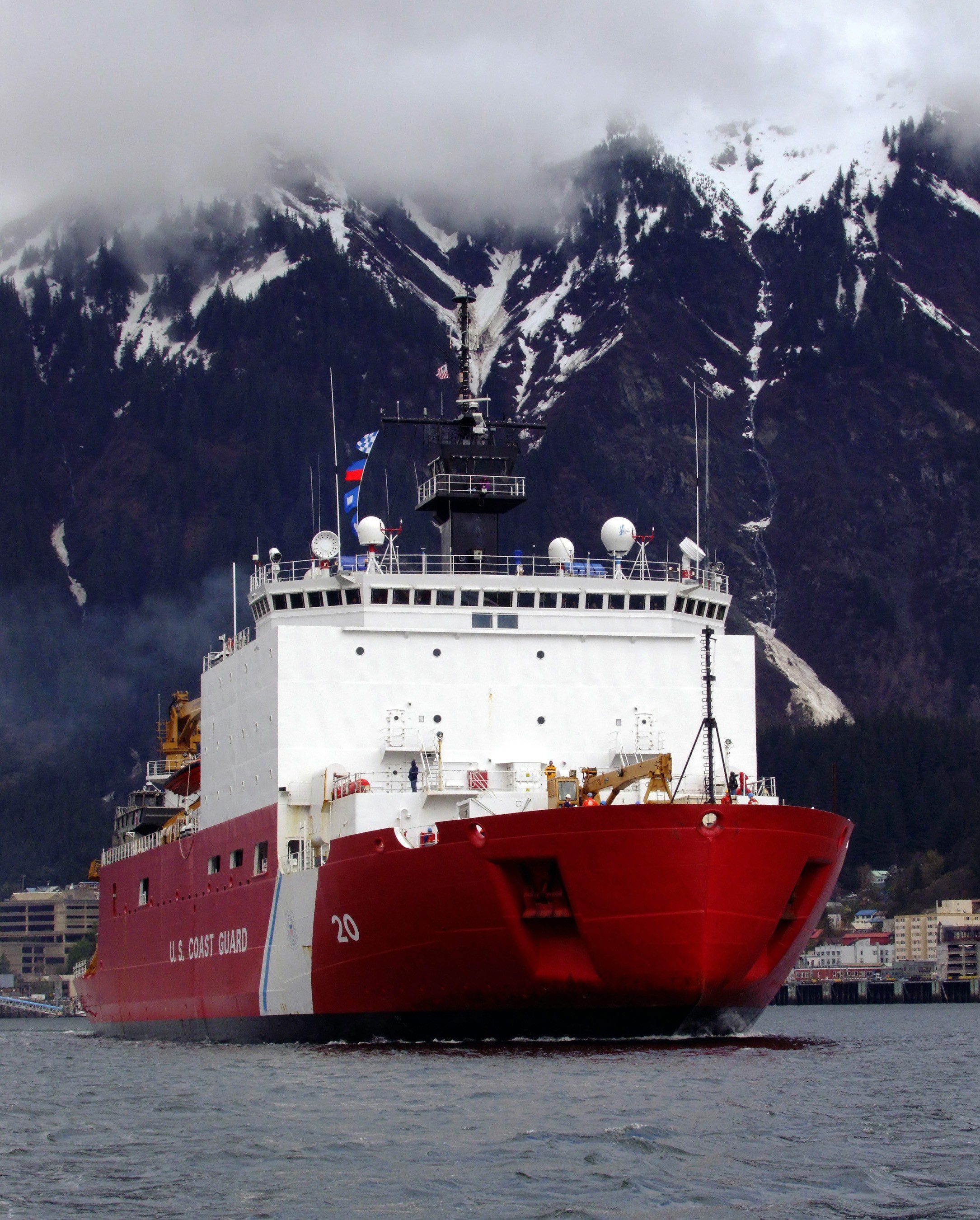U.S. icebreaker fleet will need makeover by about 2020, Coast Guard says

The U.S. Coast Guard’s fleet of two operating Arctic-class icebreakers will be sufficient — if barely so — for about another six years, the new Alaska commandant said Monday.
Rear Adm. Daniel Abel, who took over in June as the commandant for the sprawling Alaska district, told the U.S. Arctic Research Commission the Coast Guard can get by with its operating icebreakers, the Healy and the Polar Star.
“Currently, the Coast Guard feels that the inventory that we have, between the Polar Star and the Healy, provides the minimum capability that we need to get us to about 2020,” Abel told the commission, which is holding a two-day meeting in Anchorage.
The Polar Star, which has been operating in Antarctica, is considered a heavy Arctic-class icebreaker, cutting through 6 feet of sea ice when traveling at a steady 3 knots and, when it rams with full force, breaking through 20-foot-thick ice, Abel said.
The Healy, which just finished a summer mission off Arctic Alaska, is considered a medium Arctic-class icebreaker, with the power to ram through 12-foot-thick layers, Abel said.
While it lacks some of the Polar Star’s power, the Healy has features that make it valuable as a scientific research vessel, including an onboard laboratory and lots of space for traveling scientists, Abel said. The ship was used this summer for three science expeditions in the Chukchi Sea – a Stanford University project examining phytoplankton; a Woods Hole expedition studying currents and oceanography, which is part of a 10-year project; and a Coast Guard-led project studying environmental conditions that would be encountered should there be emergencies stemming from future oil development.
The Healy has also proved a valuable rescue vessel, Abel said. In July, for example, the Healy crew rescued a sailor who got stuck in ice on an expedition from Vancouver to eastern Canada through the Northwest Passage. The ship broke a path in the ice, allowing the sailboat to move freely to Barrow, Abel said.
Aging fleet
But the Healy is aging; it is about halfway through its expected 30-year service life, Abel said. The Polar Star is past its 30-year service life. The cost of a replacement icebreaker would be roughly $1 billion, according to Coast Guard estimates.
There is a third U.S. icebreaker: the Polar Sea, which is inactive and currently in Seattle. Just keeping that vessel as it is will cost money, Abel said.
“Maintaining her status quo will take $8 million to keep her in status of being noncommissioned and not in service,” he said. “If we were to reactivate her, it would take a significant investment. We would also have to re-crew her, which is about 140 people.”
The Coast Guard has launched studies of future icebreaker needs, particularly around 2020, when there might be a gap in capabilities, he said. Rather than thinking about assets already in hand and 1970s designs like those used for the Polar Star and Polar Sea, the Coast Guard decided to plan for a fresh start. “We took a clean sheet of paper,” he said.
One study was submitted to Congress last month.
The U.S. icebreaker fleet is meager compared to those in other Arctic countries, Abel said. Russia has 37 icebreakers, Sweden and Finland each have seven and Canada has six and is acquiring a seventh, he said.
Related stories from around the North:
Asia: Full steam ahead for Asian icebreakers in the Arctic this summer, Blog by Mia Bennett
Canada: Canada’s Arctic patrol ships – A $250M mystery, CBC News
Finland: New Finland icebreaker can operate sideways with asymmetrical hull, Yle News
Russia: Russia, icebreakers and Arctic identity, Blog by Mia Bennett
Sweden: Swedish icebreakers gear up for Arctic role, Radio Sweden
United States: Hearing on U.S. Policy in the Arctic – ‘Let Russia do it for us…’?, Eye on the Arctic



